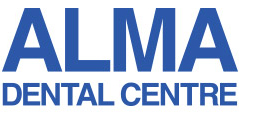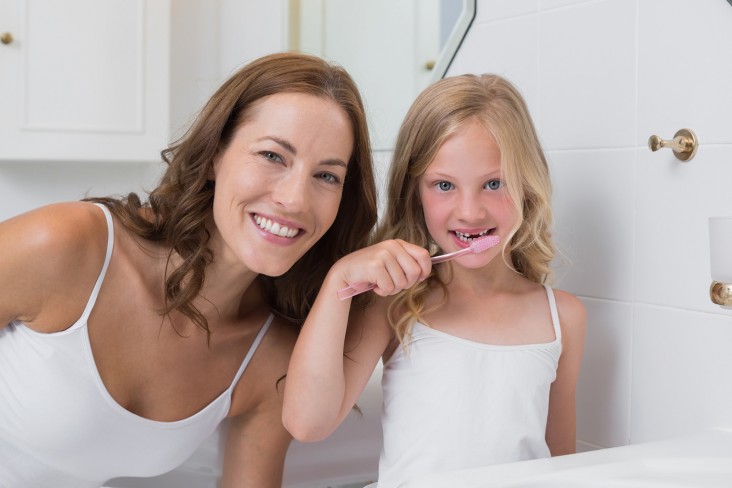2015 has arrived and with it a slew of New Year resolutions. Among the most popular of well-intended declarations is to take better care of one’s dental health. For typical Vancouver family household this resolution is one that may sweep across to include parents, toddlers, preschoolers, adolescents and teens alike. Thus, in the spirit of the season, here are some helpful and even innovative tips towards protecting your teeth in the year ahead.
5 Preventative Dental Care Tips for Family Households in 2015
1. Preventative Dental Care Begins with Brushing – From Bristle to Technique
The biggest mistake made when it comes to preventative dental care in the home is with respect to brushing. For starters, the selection of the right type of toothbrush is essential. Soft-bristled brushes are better for the entire family, taking less of a toll on natural tooth enamel and the surface of your sensitive gums. Hard-bristles may feel like they’re doing a better job at removing bacteria and plaque, but this is not the case when you use the right brushing technique. So what’s the best technique? When brushing, be sure to hold the toothbrush at a 45 degree angle against the gum-line and proceed to gently yet steadily brush the outside, inside, and chewing surface of each tooth in a back and forth motion. Don’t forget a light brushing of your tongue and inner-cheeks to keep further bacteria from building and making its way onto your teeth post-brushing. Finally, be sure to replace the toothbrush of everyone in your family every three months, as opposed to waiting until it “feels” as if the bristles have worn out their welcome.
2. Deciding Between Manual and Powered Toothbrushes
Are you considering 2015 to be the year that your family switches to powered toothbrushes? Looking for a nudge in either direction? To be honest, if your household’s brushing technique is flawless, you can accomplish optimal dental health in the home using a manual brush and method. However, before the age ten, very few children have the dexterity to maintain that aforementioned 45 degree angle while brushing back and forth in a controlled and thorough manner. There is also the consideration that at any age, not everyone has the patience, attention span, and/or discipline to stand by a flawless technique. If this is the case, you may by all means convert the entire home to automatic (battery or electric) toothbrushes. As a concerned parent, you may refer to the Canadian Dental Association (CDA) list of recognized products to identify automatic toothbrushes trusted to serve your family, in addition to monitoring the FDA’s reports on powered toothbrushes (which they have classified as medical devices).
3. Brushing With Your Smartphone
Technology has made personal dental care better than ever. In fact, you can now brush your teeth using your iPhone or Android! OK, perhaps that can be taken a little out of context, but it’s not far off. As of the end of 2014 Procter & Gamble Productions released the Oral-B app which connects to their Bluetooth enabled Smart Series 5000 and 7000 Power brushes (recognized by the CDA). With your mobile phone on your bathroom counter, the app detects the sound frequency of your powered brush and launches accordingly. From there, the app’s timers take you through the brushing process so that your entire mouth is brushed evenly to the conclusion of the dentist-recommended 2 minutes. The app also allows for customized routines and flossing reminders, so that you can take check-up feedback from your family dentist and focus on any problem areas in your mouth. For family units where preschoolers are as versed as grown-ups (if not more) in mobile device applications this P&G smartphone tool will make dental care engaging for the entire household.
4. Alternatives to Manual Flossing – Air & Water
For many, the concept of flossing may incite images of rolling up a waxy rope with your fingers in a backseat mafioso manner, before lunging forward to strangle each individual tooth in your mouth. However, this manual-only practice has been supplemented by advanced tools that are easy to use, and kinda fun. When it comes to the chore of flossing, what more could you ask for? Among them, are air flossers, which are gaining in popularity.
Slightly larger that your average electronic toothbrush, the device tip is placed at the base of your gums and uses quick bursts of air mixed with a hint of liquid (water or mouthwash) to jettison the debris from between your teeth. The process takes approximately one minute, is fun, and it feels great. View more information on the Phillips Sonicare AirFloss here.
Water flossers are also highly sought after by those looking for flossing alternatives. Also known as oral irrigators, these devices have been around for years and studies have shown that they have a more favorable impact on gum bleeding, gingivitis, and supragingival plaque than traditional dental floss. In essence, a water flosser such as the well-known Waterpik® Water Flosser, uses a stream of pulsating water to remove plaque and debris from between teeth and below the gumline to improve gingival health. Like an air flosser, they are easy to use, provide a fun tingling sensation, and are quite effective. Supplement your family’s manual flossing sessions (assuming the proper technique) with air or water flossing in the year ahead and you’ll not only be on the way to a healthier gum line, you’ll all have more fun with it in the process.
While there is no gadget out there that does the job that manual flossing does, we encourage using tools such as Air and Water flossers if they help improve your family’s participation in preventative dental care.
5. Schedule Regular Visits to Your Family Dentist
As self-serving as this last tip sounds, when it comes to preventative dental care and general oral health, there is nothing more important for kids and adults to be regular about check-ups with your family dentist. Issues like teeth grinding, bad breath, tooth pain shouldn’t be ignored. The “twice a year” rule-of-thumb standby will suffice, but should anyone in your family experience any dental discomfort whatsoever do not wait until your next scheduled visit; make an appointment to have the issue attended to promptly. If your household resides within the Point Grey, UBC or Kitsilano, please feel free to contact our UBC dental clinic at your earliest convenience.



